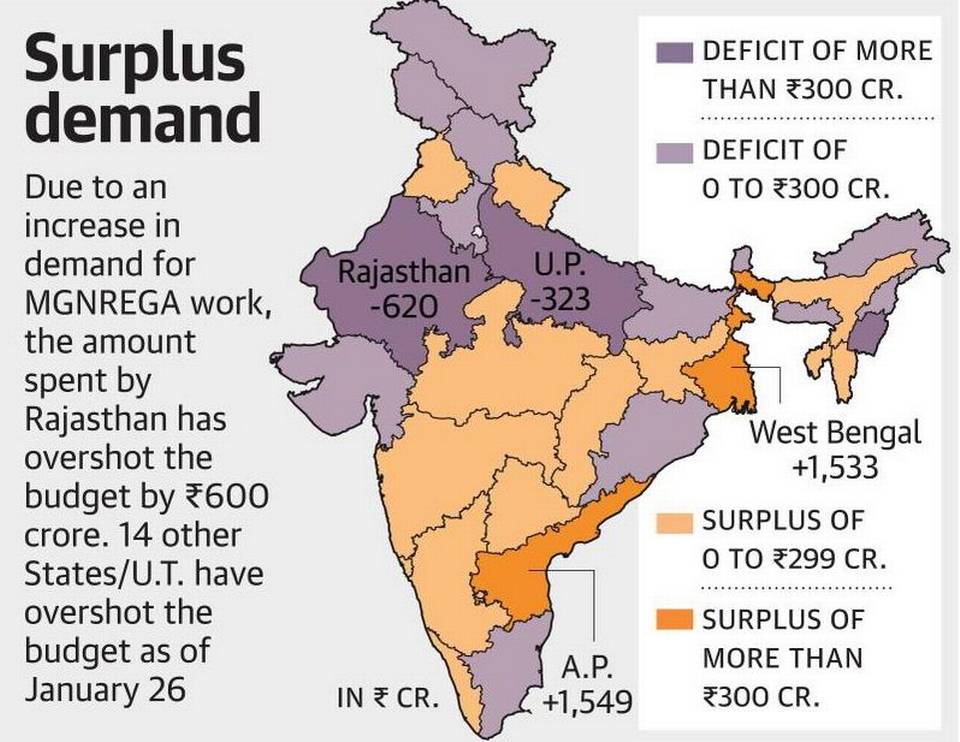Focus: GS-II Social Justice
Why in news?
The Centre is on the verge of running out of funds for the crucial Mahatma Gandhi National Rural Employment Guarantee Act (MGNREGA) scheme.
Details
- More than 96% of the allocated money has already been spent or is needed to pay pending dues.
- Fifteen States are already in the red, with Rajasthan having the highest negative net balance followed by Uttar Pradesh.
- A number of economists have recommended that putting money into the hands of rural consumers via MGNREGA is key to kickstarting the economy.
- However, 2020’s budget allocation was Rs 60 Thousand crores, lower than the amount spent in 2019.

What is the cause?
- There is a high demand for work this year as the rural economy is in distress and informal employment has also collapsed.
- Workers are being turned away from panchayat offices saying there is no available work, or they are being discouraged from demanding work since wages have not been paid and the State Government does not want to be liable to pay interest for delayed wages.
- January, February and March are months with little agricultural activity, when rural workers desperately need employment and MGNREGA sees huge demand.
Mahatma Gandhi National Rural Employment Guarantee Act (MGNREGA)
- Mahatma Gandhi National Rural Employment Guarantee Act, MGNREGA, is an Indian labour law and social security measure that aims to guarantee the ‘right to work’. This act was passed in September 2005.
- It aims to enhance livelihood security in rural areas by providing at least 100 days of wage employment in a financial year to every household whose adult members volunteer to do unskilled manual work.
- It covers all districts of India except the ones with 100% urban population.
- MGNREGA is to be implemented mainly by gram panchayats (GPs). The involvement of contractors is banned.
- Apart from providing economic security and creating rural assets, NREGA can help in protecting the environment, empowering rural women, reducing rural-urban migration and fostering social equity, among others.
How MGNREGA came to be?
In 1991, the P.V Narashima Rao government proposed a pilot scheme for generating employment in rural areas with the following goals:
- Employment Generation for agricultural labour during the lean season.
- Infrastructure Development
- Enhanced Food Security
This scheme was called the Employment Assurance Scheme which later evolved into the MGNREGA after the merger with the Food for Work Programme in the early 2000s.
Features of MGNREGA
- It gives a significant amount of control to the Gram Panchayats for managing public works, strengthening Panchayati Raj Institutions.
- Gram Sabhas are free to accept or reject recommendations from Intermediate and District Panchayats.
- It incorporates accountability in its operational guidelines and ensures compliance and transparency at all levels.
Objectives of MGNREGA
- Provide 100 days of guaranteed wage employment to rural unskilled labour
- Increase economic security
- Decrease migration of labour from rural to urban areas
-Source: The Hindu





